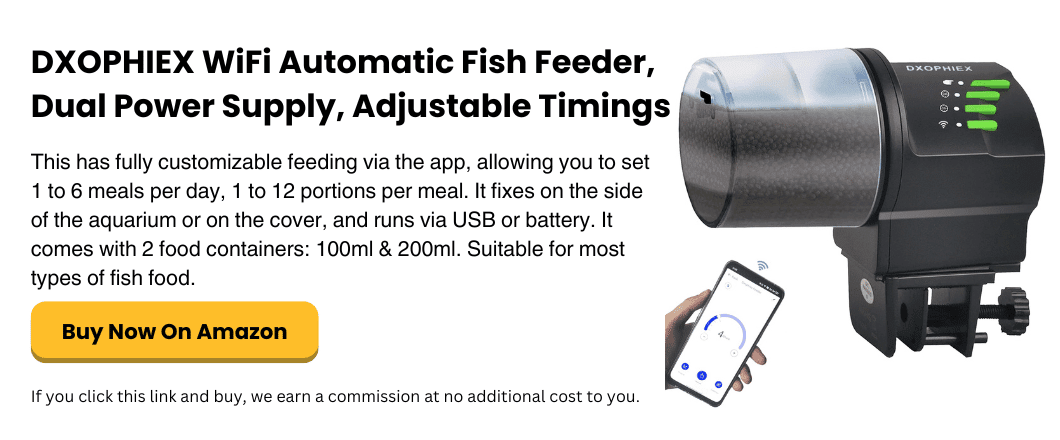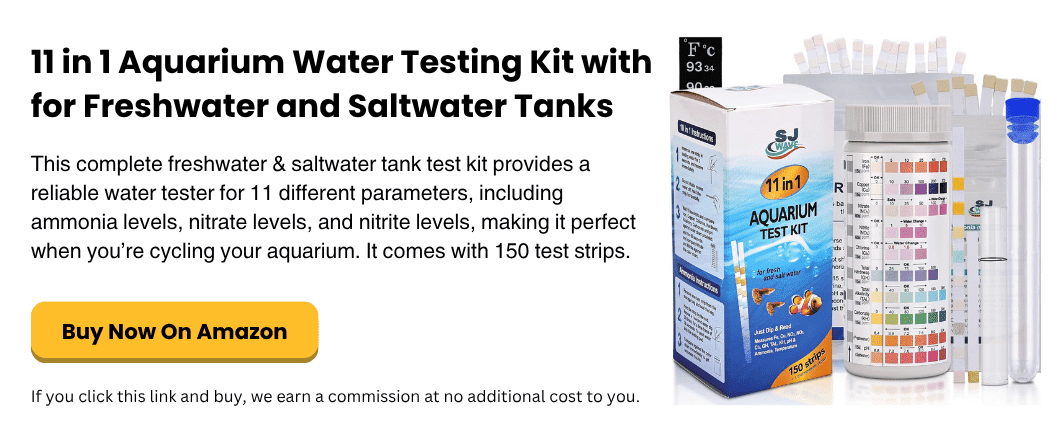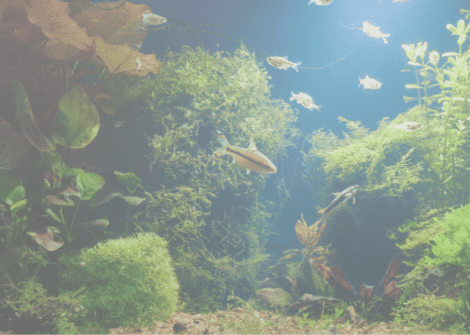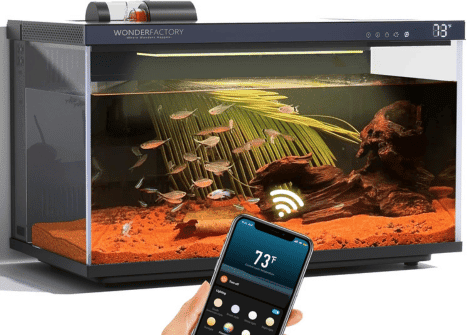The Best Feeding Schedule For Healthy Aquarium Fish
Feeding your aquarium fish might seem simple, but it’s one of the most important parts of keeping them healthy and your tank clean.
A proper feeding schedule ensures your fish get the nutrients they need without polluting the water. Overfeeding, however, is one of the most common mistakes among fishkeepers, especially for beginners.
This guide will help you understand how often to feed your fish, what to feed them, and how to adjust your routine based on the specific needs of your aquarium.
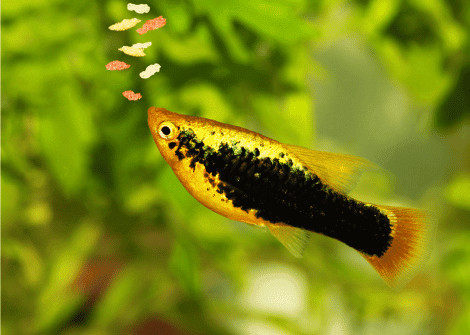
Table Of Contents
Why A Feeding Schedule Matters
Understanding Your Fish’s Dietary Needs
How Often Should You Feed Your Aquarium Fish?
Feeding Fry and Juvenile Fish
Time Of Day and Routine Consistency
Weekend Feeding and Vacation Tips
Variety and Nutrition
Adjusting For Species and Tank Types
Signs You’re Overfeeding
Feeding and Water Quality
Why a Feeding Schedule Matters
Establishing a regular feeding schedule for your fish is one of the most important habits you can build as an aquarium owner. Fish thrive on consistency, and feeding them at the same time each day helps reduce stress and supports their overall health. It also makes it easier to spot any changes in their behavior—like if a fish stops eating or seems sluggish—which can be an early sign of illness.
A feeding schedule also helps you avoid overfeeding, which is a common mistake among beginners. When too much food ends up in the tank, it can break down and pollute the water, leading to cloudy conditions or even harmful ammonia spikes. Feeding at the same time and in the right amount keeps your water cleaner and your fish happier.
Plus, fish tend to get used to a routine. You’ll often see them become more active and alert around feeding time, which adds to the fun and makes your fishkeeping experience more rewarding.
By following a consistent and appropriate feeding routine, you can keep your aquarium stable, reduce waste, and enjoy watching healthy, active fish.
Understanding Your Fish's Dietary Needs
Feeding your fish the right way starts with understanding their dietary needs. That’s because different fish have different appetites and nutritional requirements depending on their species, size, and activity levels.
Some fish are herbivores and thrive on plant-based foods like algae and vegetables. Others are carnivores that need protein-rich diets, often made up of insects or small aquatic creatures. And then there are omnivores, which enjoy a mix of both. Knowing what type of food your fish needs and likes will help you choose the best food and the best feeding routine.
The most common herbivores are:
-
Plecos
-
Silver Dollar Fish
-
Otocinclus Catfish
-
Mollies
-
Bristlenose Catfish
While the most common carnivorous fish are:
-
Betta Fish
-
Oscars
-
Arowanas
-
Jack Dempsey Cichlids
-
Lionfish (more common in saltwater tanks)
Finally, the most popular omnivores are:
-
Goldfish
-
Guppies
-
Angelfish
-
Tetras (e.g., Neon Tetras)
-
Zebra Danios
It’s also important to consider how your fish eat.
Top feeders (such as guppies, mollies, platies, and hatchetfish) prefer floating food that stays on the surface. Bottom feeders, on the other hand, (those like cory cats, kuhli loaches, and otos), search the tank floor for sinking pellets or wafers. Then there are the mid-level feeders (angelfish, tetras, rainbowfish, etc.) who graze in the middle of your aquarium, and often get along well with both surface and bottom-dwelling fish, making them excellent additions to community aquariums.
Some species even graze throughout the day, so understanding your fish’s eating behavior will prevent uneaten food from building up and polluting the tank.
Also keep in mind that overfeeding is a common mistake, especially for beginners. Fish don’t need as much food as many people think, and excess food quickly breaks down and harms water quality. A good rule of thumb is to feed only what your fish can consume in two to three minutes once or twice a day, though this varies by species.
Getting to know your fish and their habits is part of the fun of fishkeeping. When you understand their dietary needs, you’re not just feeding them—you’re supporting their health, color, energy levels, and overall happiness. And that makes for a cleaner tank and a more rewarding aquarium experience.
How Often Should You Feed Aquarium Fish?
The general rule for most aquarium fish is to feed them once or twice a day. Smaller fish with faster metabolisms may benefit from two smaller feedings, while larger or less active fish often do fine with just one.
The key is to feed only as much as they can consume within two to three minutes. If you notice food sinking to the bottom uneaten, you’re likely feeding too much. Over time, this can lead to water quality issues and stress your fish.
In well-maintained tanks, skipping a day of feeding once a week is not only safe but can actually be beneficial. It gives your fish’s digestive systems a break and helps prevent overfeeding-related problems.
Feeding Fry and Juvenile Fish
Baby fish (fry) and young juveniles require more frequent feedings because they’re growing rapidly. In most cases, feeding small amounts three to four times per day is ideal. The food should be appropriately sized—powdered flakes, infusoria, or newly hatched brine shrimp are good options depending on the species.
As they grow, the frequency can be gradually reduced to match the adult schedule. Keep an eye on their development, and adjust accordingly to ensure they’re getting the nutrition they need without overwhelming the tank.
Time of Day and Routine Consistency
Try to feed your fish at the same time each day. Fish quickly learn when it’s feeding time and may become more active or excited in anticipation. This predictability reduces stress and helps create a stable environment. Morning and early evening are ideal feeding times, but consistency matters more than the exact hour.
If you’re feeding twice a day, aim for about 10–12 hours between feedings—for example, 8 a.m. and 6 p.m. Just make sure you have time to observe them while they eat to ensure everyone is getting food and no one is overfed.
Weekend Feeding and Vacation Tips
If you’re away for the weekend, most adult fish will be fine without food for a couple of days. Healthy fish can generally go 3–7 days without eating. For longer trips, consider an automatic feeder or having a trusted friend handle feeding while you’re gone.
Avoid dropping in vacation food blocks unless you’re 100% certain your fish will eat them, as they can quickly deteriorate and foul the water. Automatic feeders that dispense small, controlled amounts are a much safer and cleaner option.
Variety and Nutrition
Like humans, fish benefit from a varied diet. Even if a high-quality flake or pellet food forms the base of their diet, rotating in treats like frozen daphnia, bloodworms, or vegetables can boost their nutrition and keep them interested. Herbivores may enjoy blanched spinach or zucchini, while carnivores often thrive with occasional protein-rich snacks.
This variety helps ensure your fish get all the vitamins, minerals, and other nutrients they need to stay healthy, resist disease, and show vibrant colors. Just remember, treats should be occasional—once or twice a week is plenty.
Adjusting for Species and Tank Types
Community tanks with a mix of species may require a bit of balancing. Make sure all fish types are getting what they need. For example, fast-swimming mid-level fish might snatch food before slower bottom feeders get a chance. Try feeding in different areas or using sinking foods to make sure everyone is covered.
For species-specific tanks, follow best practices for that particular fish. Goldfish, for instance, benefit from small, frequent feedings because they lack stomachs and digest slowly. Bettas often do best with two small meals per day and regular fasting days to prevent bloating.
Signs You’re Overfeeding
Overfeeding is easy to do and can be hard to notice until there’s a problem. Watch for these signs:
-
Uneaten food lingering after a few minutes
-
Cloudy or smelly water
-
Algae growth increasing quickly
-
Fish spitting out food or ignoring it
If any of these happen, reduce the amount you’re feeding. You may also want to test your water for ammonia, nitrites, and nitrates to catch any imbalances early.
Feeding and Water Quality Go Hand in Hand
Feeding directly affects your tank’s water quality. Excess food decays and releases ammonia, which can stress or even kill fish if not controlled. Combine a good feeding schedule with regular tank maintenance, including water changes and filter cleaning, to keep the environment clean and safe.
Monitor your tank’s parameters regularly, especially if you change anything in your feeding routine. Good water quality supports strong immune systems and helps fish grow and thrive.
Feeding your fish properly isn’t just about dropping in flakes once or twice a day. It’s about understanding your fish, watching their behavior, and tailoring your approach to their needs. A consistent, balanced feeding schedule helps you avoid common problems like overfeeding, poor water quality, and nutrient deficiencies.
By investing just a few minutes a day and following these best practices, you’ll not only keep your aquarium cleaner but also ensure your fish live longer, healthier lives. Feeding time can be one of the most rewarding parts of fishkeeping—use it to connect with your fish and keep your tank thriving.
More Reading
Cloudy water in your aquarium can be a real worry. Our guide shows what is causing the cloudy water, how to clear it – and how to keep it permanently clear and clean.
You’re probably eager to set up your fish tank and add your favorite fish. But before you do, it is crucial you cycle your fish tank. Find out everything you need to know – and do.
Using smart tech with your aquarium can make your life a lot easier, and makes owning fish a lot more enjoyable. Our guide shows you how it can really help.

